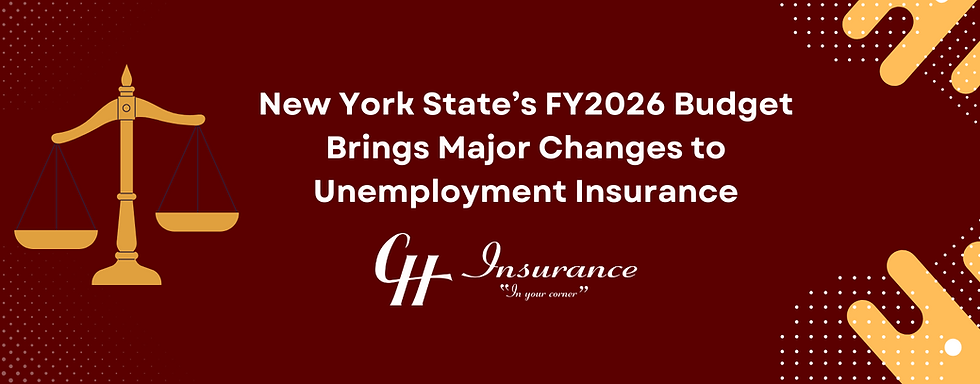Understanding the New Federal Independent Contractor Test: A Guide for Small Business Owners
- dgraham43
- Feb 27, 2024
- 4 min read

As small business owners, staying updated with the latest regulations and compliance standards is crucial for the smooth operation of your business. A significant update that demands your attention is the change in the federal independent contractor test by the U.S. Department of Labor (DOL). Effective March 11, 2024, this new rule has far-reaching implications for how you classify your workers, which could impact your business operations, financial obligations, and legal liabilities.
The Shift in Federal Guidance
On January 10, 2024, the DOL published a final rule that revises the guidance on differentiating between employees and independent contractors under the Fair Labor Standards Act (FLSA). This pivotal change rescinds the 2021 Independent Contractor Rule, aiming for a more nuanced approach that aligns closely with the FLSA's interpretation by judicial precedent over the years.
The essence of this revision is to ensure that workers who should be classified as employees, with access to minimum wage, overtime pay, and other protections, are not misclassified as independent contractors. This move by the DOL is designed to minimize the risk of misclassification, offering a clearer, more consistent framework for businesses to follow.
Here are the practical changes:
· Economic Reality Test Revitalization: The rule reinstates the traditional economic reality
test to determine if an individual is an employee or an independent contractor under the
FLSA. This test focuses on the economic dependence of the worker on the potential
employer. The more economically independent the worker, the more likely they are to be
considered an independent contractor.
· Core Factors: The rule emphasizes that the inquiry into whether a worker is
economically dependent on an employer (and thus an employee under the FLSA) or is in
business for themselves (and thus an independent contractor) is based on the totality of
the circumstances, including:
o The nature and degree of the worker’s control over the work.
o The worker’s opportunity for profit or loss based on initiative, investment, or both.
o The amount of skill required for the work.
o The degree of permanence of the working relationship.
o Whether the work is an integral part of the employer’s business.
Additional Factors: If the initial factors above are not conclusive, additional factors may be considered to determine the worker's status. These factors must be indicative of whether a worker is economically dependent on the employer or is in business for themselves.
· No Single Factor Determinative: The rule makes clear that no single factor, including the opportunity for profit or loss or the existence of an entrepreneurial opportunity, is
determinative in the analysis of whether a worker is an employee or an independent
contractor.
· Actual Practices Weighted More Heavily: The actual practice of the parties involved carries more weight than what may be contractually or theoretically possible.
The Importance of Correct Classification
Why does this matter for small employers? Misclassifying employees as independent contractors can lead to significant legal and financial consequences. Beyond the immediate risks of back pay, penalties, and damages, there's the potential damage to your reputation and the trust you've built with your workforce. Correct classification is not just a legal requirement; it's a cornerstone of fair and ethical business practice.
What This Means for Your Business
This updated rule emphasizes the need for small business owners to meticulously review their working arrangements with independent contractors. It’s a call to action to ensure that these classifications are in strict compliance with the new guidelines. The criteria for determining whether a worker is an independent contractor or an employee under the FLSA involves a thorough analysis of the working relationship, focusing on the actual practices rather than what may be outlined in a contract.
Given the complexities involved, it’s prudent for small business owners to:
· Review all independent contractor agreements: Ensure they accurately reflect the
nature of the working relationship and meet the criteria set forth by the new rule.
· Consult with HR experts: Understanding the nuances of the FLSA and the latest rule can
be challenging. Consulting with HR professionals or legal experts can provide clarity and
help you navigate these changes effectively.
· Audit your workforce classifications: Regularly auditing your workforce to ensure
compliance with the latest regulations is essential. This includes revisiting the roles and
responsibilities of your workers to guarantee that their classification as independent
contractors or employees is accurate.
The DOL's final rule on the independent contractor test is a wake-up call for small business owners to double-check the classifications of the people working for them. By taking proactive steps to ensure compliance, you can avoid legal pitfalls and foster a fair, compliant, and productive working environment.
For small businesses looking to navigate these changes confidently, the HR services available from CH Insurance are here for you. Our program is designed to provide you with human resources support, including reviewing and updating critical policies like your employee handbook, and offering phone and email support when you have questions. If you have questions or want to learn more, email Paul Banuski, our HR Consultant, at pbanuski@chinsurance.cc









Comments